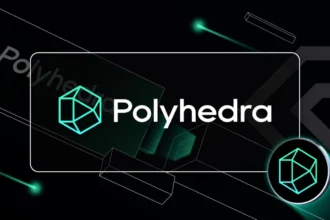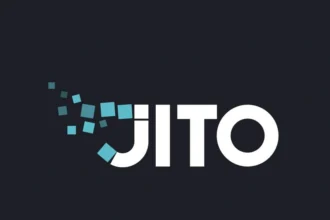Ethereum, the world’s second-largest blockchain, is undergoing continuous evolution to meet increasing demand for scalability, efficiency, and security. On March 29, 2025, Ethereum co-founder Vitalik Buterin published a comprehensive roadmap detailing crucial Layer 2 (L2) security enhancements, aimed at boosting efficiency, reducing costs, and improving interoperability across the Ethereum ecosystem.
This article explores the key takeaways from Buterin’s roadmap, its potential impact on Ethereum’s market dynamics, and what users, investors, and developers can expect moving forward.
Vitalik Buterin’s L2 Security Roadmap: Key Highlights
Vitalik Buterin’s proposed Ethereum L2 security upgrades focus on three major developments:
1. Expanding Blob Space for Higher L2 Transaction Throughput
The upcoming Pectra and Fusaka upgrades will introduce larger blob space, enabling Ethereum to process more Layer 2 transactions efficiently. This improvement is crucial for:
- Lowering transaction fees on L2 solutions.
- Enhancing network scalability by supporting more data per block.
- Improving user experience by reducing congestion.
2. Hybrid Proof System for Faster Finality
Ethereum will integrate a hybrid proof system combining:
- Optimistic proofs (used in optimistic rollups for faster transaction confirmation).
- Zero-Knowledge (ZK) proofs (for enhanced security and privacy).
- Trusted hardware proofs (for verifying computations with minimal computational cost).
This combination ensures rapid transaction finality, stronger security, and cost efficiency while maintaining Ethereum’s decentralized ethos.
3. Unified ZK Proof Aggregation Layer
Ethereum’s developers are working on a ZK proof aggregation layer, which will:
- Lower verification costs for transactions.
- Enable seamless cross-chain transactions between Layer 2 networks.
- Improve interoperability by making Ethereum feel like a single unified ecosystem instead of multiple fragmented chains.
“Using Ethereum should feel like using a single ecosystem, not 34 different blockchains.” — Vitalik Buterin
This emphasis on interoperability and user experience could position Ethereum as the leading blockchain for both developers and mainstream users.
Ethereum Market Trends & The Impact of L2 Upgrades
Ethereum’s Current Market Performance
As of the latest data:
- Ethereum (ETH) price: $1,897.68
- Market capitalization: $228.96 billion
- Market dominance: 8.38%
- 24-hour trading volume: $17.80 billion (+54.26%)
- 90-day performance: 43.87% decline
Ethereum’s recent price fluctuations reflect ongoing market volatility, but these L2 enhancements could positively impact ETH’s long-term adoption and valuation.
Potential Impact of L2 Upgrades on Ethereum’s Market Position
The implementation of Buterin’s roadmap could drive:
- Lower gas fees, making Ethereum more accessible to retail users.
- Institutional adoption, thanks to improved security and efficiency.
- Higher demand for ETH, as staking and transaction finality improve.
Frequently Asked Questions (FAQs)
1. What is Ethereum’s L2 security enhancement roadmap?
Vitalik Buterin’s L2 security roadmap includes data scaling, hybrid proof systems, and a unified ZK proof aggregation layer to enhance Ethereum’s efficiency and interoperability.
2. How will Ethereum’s Pectra and Fusaka upgrades impact users?
These upgrades will increase transaction capacity, reduce gas fees, and improve scalability for users transacting on Layer 2 networks.
3. What is the significance of the hybrid proof system?
The hybrid proof system combines optimistic, zero-knowledge, and trusted hardware proofs, ensuring faster transaction finality, reduced costs, and improved security.
4. Will these upgrades affect Ethereum’s price?
While short-term price movements depend on market sentiment, these upgrades could increase Ethereum’s long-term value by enhancing network usability and adoption.
5. What is blob space, and why is it important?
Blob space allows Ethereum to store more transaction data per block, improving Layer 2 throughput and reducing congestion.
6. How will Ethereum become a unified ecosystem?
Vitalik Buterin’s roadmap aims to integrate Layer 2 networks seamlessly, making Ethereum feel like a single blockchain instead of multiple separate chains.
7. When will these upgrades be implemented?
The Pectra and Fusaka upgrades are scheduled for 2025, with additional security improvements rolling out over the next few years.
8. How do these changes impact Ethereum developers?
Developers will benefit from lower verification costs, improved cross-chain compatibility, and enhanced security, making Ethereum a more attractive platform for building dApps.
9. Will Layer 2 solutions still be needed after these upgrades?
Yes, Layer 2 solutions will remain essential for scalability, but they will become more efficient, interoperable, and cost-effective.
10. How can investors prepare for Ethereum’s upcoming changes?
Investors should stay informed on upgrade timelines, monitor Ethereum’s adoption trends, and consider the long-term impact of improved security and scalability on ETH’s value.
Conclusion
Vitalik Buterin’s Ethereum L2 security upgrades mark a significant step toward enhanced scalability, reduced transaction costs, and improved interoperability. By addressing key pain points within Ethereum’s Layer 2 ecosystem, these changes could bolster Ethereum’s dominance in the blockchain space and drive long-term growth for ETH.
As Ethereum moves towards a more unified and efficient ecosystem, both developers and investors should stay updated on these crucial developments. Whether these enhancements will drive a bullish Ethereum price surge remains uncertain, but the long-term impact on the network is undeniably promising.
Disclaimer
This article is for informational purposes only and should not be considered financial or investment advice. Cryptocurrency investments carry risks, and readers should conduct their own research before making any investment decisions.



